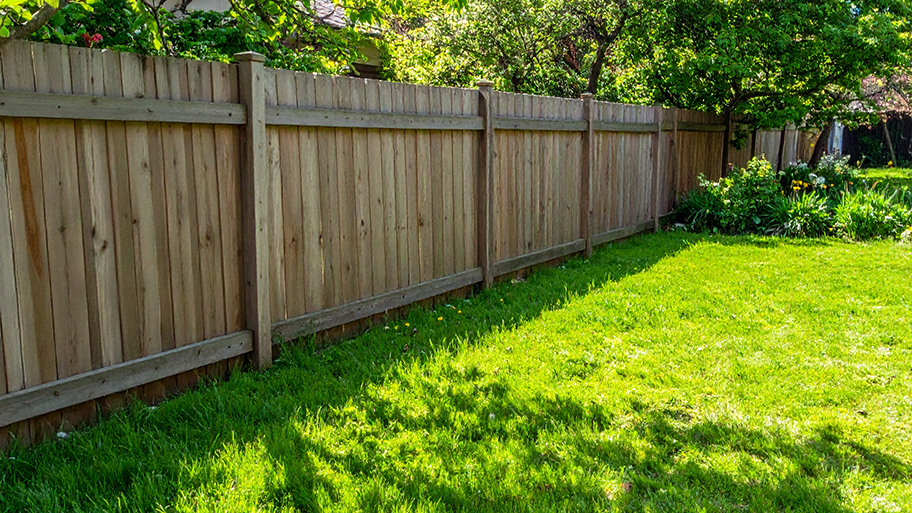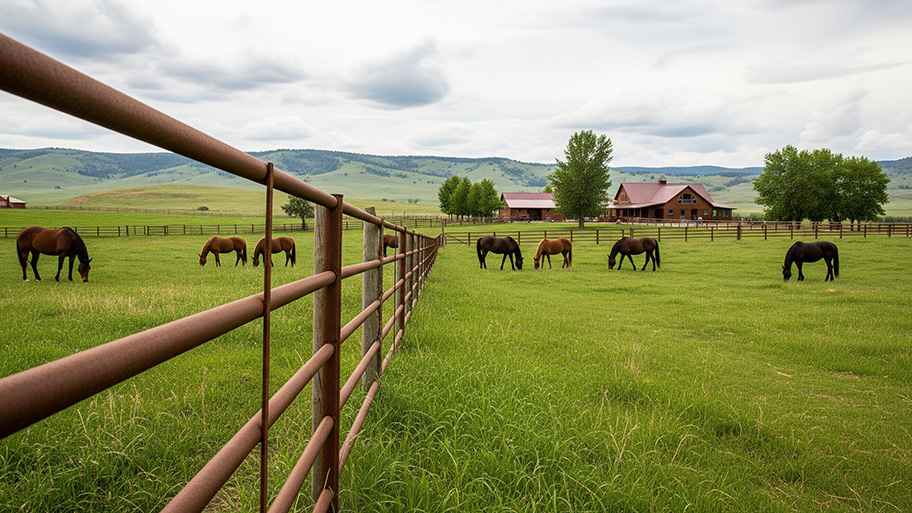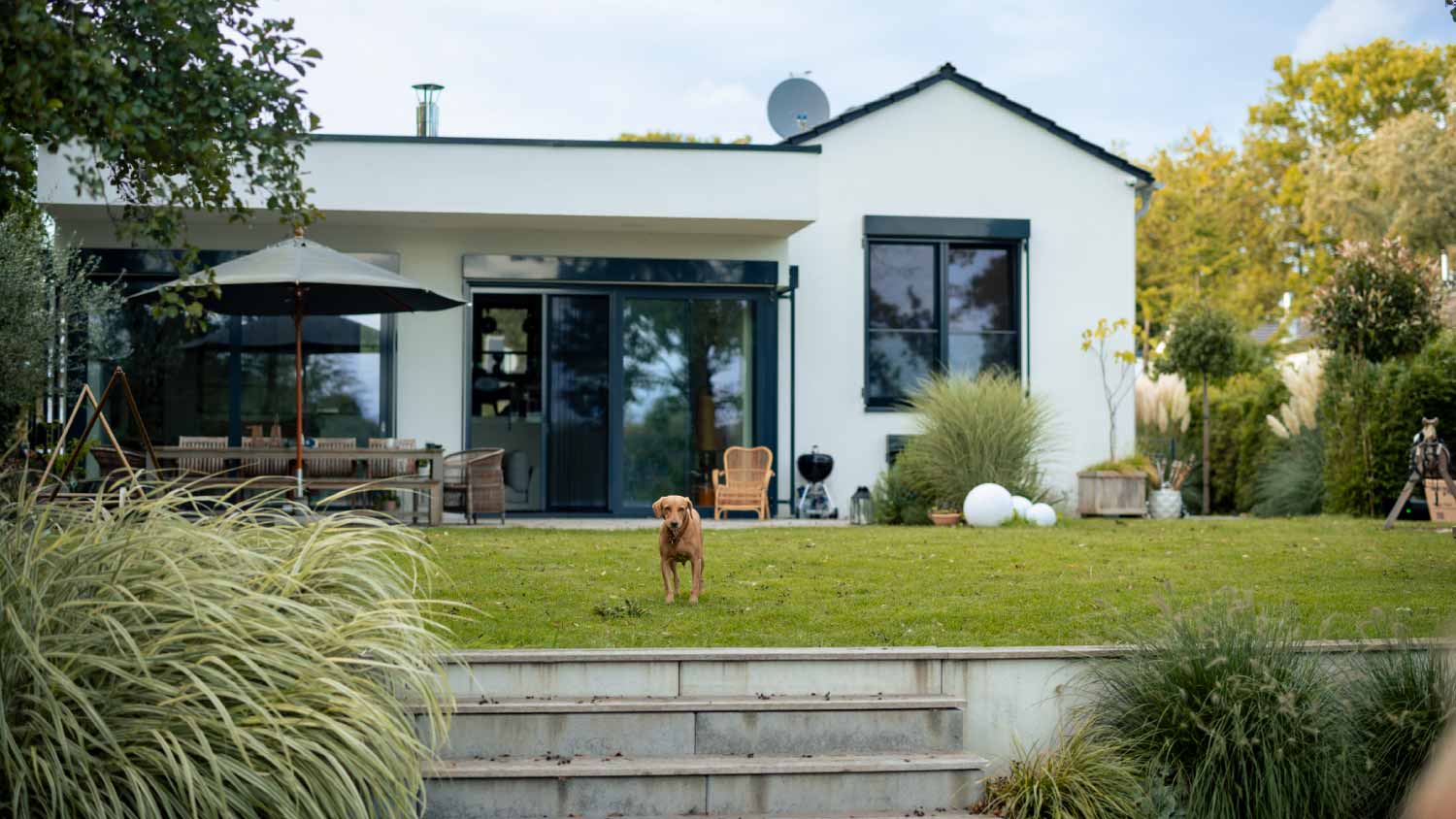
There are many dog fence options, from tall privacy fencing to wireless underground electric fences. Here's how much it costs to install a dog fence.
Animal fencing service costs depend on your project and location. Check with a local pro for your specific job.
Underground invisible fence system cost ranges from $2 to $4 per linear foot.
Hourly rates range from $50 to $100. For trenching and wire installation expect to pay $2 and $4 per foot.
Check your HOA guidelines prior to installation. If a permit is needed, expect a price between $25 to $100.
Extra collars for multiple pets range from $50 to $150 each. adding to overall costs.
DIY invisible fence kits start around $200 and can go up to $700 for higher-end packages.
This article was created using automation technology and thoroughly fact-checked and edited by an Angi Editor in accordance with our AI policy.
Invisible fence installation cost averages $1,600, with most homeowners paying between $950 to $2,500 for a professionally installed system. DIY kits start around $200, but professional labor, yard size, and system type can increase the total. Expect to pay $2 to $4 per linear foot for underground systems.
Invisible fences are a popular choice for pet owners who want to secure their yards without traditional fencing. This guide covers invisible fence installation cost in detail, including key factors, what influences price, and how to make the best decision for your home and pets.

Several factors influence invisible fence installation cost beyond yard size and system type. Understanding these helps you plan and budget effectively.
The size of your yard is one of the biggest drivers of invisible fence installation cost. Larger yards require more wire, flags, and labor, especially for underground systems. Most invisible fence companies price by the total linear footage of the boundary. For underground systems, costs range from $2 to $4 per linear foot.
Small yards (up to 1/4 acre) are more affordable, while large or complex properties can increase costs significantly. Standard systems have maximum coverage limits, with upgrades needed for multi-acre or irregularly shaped lots. Multi-pet or multi-zone setups may also require additional equipment or labor.
Costs increase as the coverage area expands. Small yards can often use basic kits, while larger spaces need more materials and professional help. Irregular shapes or landscaping obstacles can add to installation time and materials. If you have multiple pets, you may need extra collars or zone controls, raising your total cost.
| Yard Size | Linear Footage Range | Cost Range |
|---|---|---|
| Small (up to 1/4 acre) | 400–800 | $700–$1,200 |
| Medium (1/4–1/2 acre) | 800–1,200 | $1,100–$1,800 |
| Large (1/2–1 acre) | 1,200–1,800 | $1,500–$2,500 |
| Extra large (1+ acre) | 1,800+ | $2,000–$3,500 |
The type of invisible fence you choose plays a major role in your overall installation cost. Homeowners can select from three main systems: wired (underground), wireless, and GPS-based. Each system comes with unique installation requirements and price points.
Wired systems involve burying a boundary wire around your yard and are the most common choice. Wireless systems use a transmitter to create a circular boundary but have limited range and less adaptability to odd-shaped properties. GPS-based systems use satellite signals for customizable, wire-free boundaries and are the most expensive.
System costs also vary by brand, feature set, and whether you opt for professional installation or a DIY kit. Some brands offer advanced features like smartphone integration or rechargeable collars, which can add to the price.
| System Type | Description | Average Cost | Pros | Cons |
|---|---|---|---|---|
| Wired | Underground wire, customizable boundary | $1,000 | Reliable, works for most yards | Labor-intensive installation |
| Wireless | Transmitter creates circular boundary | $350 | Quick setup, portable | Limited shape, potential interference |
| GPS-based | Uses GPS to set virtual boundaries | $2,000 | No digging, flexible boundaries | High cost, needs clear signal |
Invisible fence installation cost can change significantly depending on where you live. Labor and material costs are often higher in urban areas and regions with a higher cost of living. Soil conditions, climate, and local regulations can also impact installation complexity and price.
For example, rocky or clay-heavy soil can make trenching more difficult and expensive. In colder climates, installers may need to bury wires deeper, adding to labor time and cost. Fees are often higher in major cities compared to rural areas due to increased demand and overhead.
Invisible fences are installed by pet containment specialists, electricians, or landscapers. Labor is charged by the hour, per linear foot, or as a flat fee. Hourly rates range from $50 to $100, while per-foot rates for trenching and wire installation fall between $2 and $4. Some installers have minimum service fees, which may include setup, testing, initial pet training, and a walkthrough.
Labor rates are higher in cities and regions with a high cost of living. Complex installations, such as those requiring extensive trenching or obstacle navigation, will increase labor costs.
Most areas do not require permits for invisible fence installation, but some municipalities or homeowners associations (HOAs) have specific rules. If a permit is needed, costs are $25 to $100. Always check local codes and HOA guidelines before starting your project to avoid fines or required modifications.
Upgrades and accessories can add to your invisible fence installation cost. Extra collars for multiple pets range from $50 to $150 each. Surge protectors, remote controls, and rechargeable collars may add $20 to $100 per item. Accessories like training flags, batteries, and wire repair kits are $10 to $50. Smartphone integration or app-based monitoring features may increase your budget by $100 to $300.
Other factors that may affect your total cost include:
Yard complexity, such as landscaping, trees, or underground utilities that require careful wire placement
Accessibility for trenching or laying wire, especially in tight or sloped areas
Site preparation, like clearing debris, excavation, or removing old fencing
Delivery fees for materials or rental equipment
Post-installation cleanup or lawn restoration
Design or consultation fees for custom layouts and multi-zone systems
Inspection costs, if required by local authorities
Beyond the initial installation, there are ongoing and optional costs to keep your invisible fence working reliably and efficiently.
Most manufacturers and installers offer warranties that cover system defects or installation issues for one to three years. Extended warranties can be purchased for $50 to $200, which may include additional years of coverage for electronics or collar replacement.
Plan for ongoing expenses like replacement batteries ($10 to $60 per year), collar maintenance, and—for GPS-based systems—monthly subscriptions of $5 to $15. Wired and wireless systems have minimal energy costs, adding just a few dollars per year to your electric bill.
Routine maintenance includes checking wires for breaks, testing collars, and replacing batteries. DIY maintenance costs are under $50 per year. Common repairs include fixing wire breaks ($100 to $300), transmitter issues ($75 to $200), or replacing a failed collar ($50 to $150). Professional repairs cost more but may be necessary for complex issues.
Sales tax on materials and installation services depends on your state or locality. Expect to pay an additional 5% to 10% on your total bill, with higher rates in some regions.
Homeowners insurance does not cover invisible fences, but some providers offer discounts for pet containment systems. You may be able to add a rider for system protection at an extra cost of $25 to $100 per year. Always check with your insurer for options and eligibility.
DIY invisible fence kits start around $200 and can go up to $700 for higher-end packages. You will need basic tools like a shovel, wire cutters, and possibly a trenching tool. Installation takes several hours to a full weekend, depending on your experience and yard size. You save on labor, but risks include improper installation, reduced reliability, and voided warranties.
Professional installation packages range from $950 to $2,500 and include system setup, wire installation, testing, and initial pet training. The main advantages are expert installation, warranty coverage, and peace of mind. The cost is higher than DIY, but you avoid common pitfalls and get a system that works reliably. Hiring a local fencing pro is recommended for large, complex, or multi-pet properties.
Common repair needs include wire breaks, faulty transmitters, and collar malfunctions. Repairs often cost less than replacement, but if your system is outdated or if repair costs reach 50% of the price of a new system, replacement is recommended. Warranty coverage can offset repair or replacement costs, so always check your documentation before making a decision.
Invisible fence installation may not dramatically increase your home’s resale value, but it can make your property more appealing to buyers with pets. Compared to traditional fencing, invisible systems are less noticeable and preserve your landscaping views. They improve safety and convenience, especially for pet owners.
The return on investment depends on factors like neighborhood norms, local pet ownership rates, and the quality of the system. In areas where pet containment is valued, an invisible fence can be a selling point. Universal design and a tidy yard free of physical barriers are additional benefits.
There are several ways to keep your invisible fence project budget-friendly without sacrificing quality or safety. Taking these steps can help you save money:
Obtain multiple quotes from fencing pros to compare pricing and services.
Choose wallet-friendly materials with proven durability for your yard's individual needs.
Prepare the fenced area yourself, such as clearing it of any debris or furniture, to reduce overall project cost.
Bundle your invisible fence project with other exterior upgrades to take advantage of package discounts.
Schedule regular maintenance to avoid costly repairs and extend the life of your invisible fence.
Home is the most important place on earth, which is why Angi has helped more than 150 million homeowners transform their houses into homes they adore. To help homeowners with their next project, Angi provides readers with the most accurate cost data and upholds strict editorial standards. We extensively research project costs to develop the pricing data you see, so you can make the best decisions for you and your home. We rely on reputable sources, including the U.S. Bureau of Labor Statistics, academic journals, market studies, and interviews with industry experts—all to ensure our prices reflect real-world projects.
Want to help us improve our cost data? Send us a recent project quote to [email protected]. Quotes and personal information will not be shared publicly.
From average costs to expert advice, get all the answers you need to get your job done.

There are many dog fence options, from tall privacy fencing to wireless underground electric fences. Here's how much it costs to install a dog fence.

Pipe fencing is an extremely strong, durable option for containing horses and other livestock. This guide breaks down the factors that affect pipe fence cost.

An invisible fence helps keep your pets safe without building a traditional fence. Ask a contractor these electronic pet fence installation questions before hiring.

It’s essential to give your dog a safe place to run and play. Learn which are the best fences for dogs so your pet can freely enjoy the outdoors.

Does your normally cool-headed dog go berzerk when they spot your neighbor’s pooch through a fence? Try these 10 tips to prevent dog fence fighting.

Keep your pet safe and secure by learning how to locate and fix breaks in an invisible dog fence with these step-by-step tips.